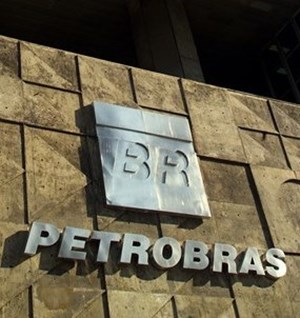OTC 2024: Petrobras works to revitalize Campos basin offshore Brazil
(WO) - In a Monday panel at OTC 2024, several Petrobras representatives tackled the multi-layered operations in revitalization of the Campos basin offshore Brazil. These company professionals included Denis Dinelli, General Manager of Deepwater Project Design; Thiago Miranda, Oil Exploration Technician; Luis Azevedo Duccini, Project Implementation Manager for Marlim field; Rodrigo Lacelotti Campos, Master Subsea Engineer; and Marcio Mattoso de Padua, General Manager of FPSOs Implementation.
From old assets to new ones. Dinelli opened the session by laying out the strategies and benefits of the company’s revitalization projects in broad terms, mainly involving the transition from old assets to new ones, while breathing new life into existing assets to extend their operational lives. He noted that the company is pursuing a campaign of 135 new wells and injection wells over the next five years, in addition to four SPU units. Three of the latter will become operational over the 2025–2028 period, with a fourth unit expected to be built but not yet operational in 2028.
The company is looking to further expand activity in the area with 18 new exploration wells for the Agua’ Marinha and Norte de Brava Blocks. They also expressed interest in continuing a trend of increased production sharing arrangements that was begun in 2023.
TOT-3P technology is a key component of streamlining the campaign’s activities, particularly as a means of reducing construction duration for new wells, lowering overall costs for construction, and reducing greenhouse gas (GHG) emissions. Petrobras anticipates a 43% reduction in construction duration and GHG emissions, with a 53% cost reduction.
Plans for Marlim and Voador fields. Thiago Miranda expanded the conversation, focusing on Marlim and Voador fields specifically within the Campos basin area. Sitting 150 km (93 mi) from the city of Macae’, the fields are combinations of pre- and post-salt formations. Since existing infrastructure is coming to the end of its production life, the revitalization efforts seek to counter a decline in output with new production wells and infrastructure.
While the original nine platforms will be decommissioned, two new FPSO units will replace them: the Anna Nery and Anita Garibaldi. Moving from the old platforms to FPSOs will allow for a 55% reduction in GHG emissions, as well as pave the way for a projected 860 MMboe of accumulated oil production from 2023–2028 within Marlim and Voador fields. The Anna Nery and Anita Garibaldi are expected to remain operational for 25 years, further adding to decarbonization efforts.
Plans for new wells. Continuing the discussion, Luis Azevedo Duccini shifted the focus to the new wells planned—namely 15 new production wells, with 14 being post-salt and one pre-salt. He noted a further 50 relocated wells, in addition to elaborating on some of the development processes involved. Specifically, he noted TOT-3P’s importance in streamlining well construction timelines by reducing the average number of days from 101 (the average for 2010-2019 operations) to 62 (as of 2023). This reduction, of course, also aids in lowering costs and CO¬2 emissions.
Innovations and technologies—like the TOT-3P—were a key point of interest overall, as Rodrigo Lacelotti Campos was quick to emphasize. For deepwater brownfields in the Campos basin, existing infrastructure includes 19 platforms in operation, 54 subsea manifolds, over 7,000 mi of subsea pipelines, and 315 subsea Christmas trees (XTs). This is only growing, as over 200 wells and 2,000 more miles of pipelines will be added to the number.
To support both the existing and new infrastructure, Campos noted four technologies of interest: the MODA Riser Integrated Monitoring system; a torsion monitoring system; the Ultrasonic Guided-Wave Monitoring System; and the Multi-size Mandrel Cleaning Pig. MODA is already in service for 43,000 bpd of production, enabling an extension of service life up to three times longer. Meanwhile, the diverless torsion monitoring system and Ultrasonic Guided-Wave Monitoring system both offer safety improvements, with the latter allowing time savings of approximately 40 hrs in inspections and subsequently, cost and emissions savings, as well. The Multi-size Mandrel Cleaning Pig allows ID variation of 112% (4 in. to 8.5 in.), making it adaptable for operational needs.
Lacelotti Campos also touched on a few other technologies—such as life extension for flexible subsea pipes, XT life extension and an ultrasound inspection tool, which have provided more than 1,000 years in service life extension since 2017 and 48,000 tons of CO2 from workovers avoided, respectively.
An Open-Sea lab partnership with brownfield operations looks to further build on the technology supporting operations and revitalization projects in the Campos basin.
Status of FPSOs. Marcio Mattoso de Padua directed the discussion back to the new FPSOs—Anna Nery and Anita Garibaldi—as well as the decommissioning of the older infrastructure the two vessels will replace. The nine units to be decommissioned consist of five FPSOs and four Subsea Stations (SS). Aside from the reduction in CO¬2¬ emissions offered by the shift from nine units to two, the two new FPSOs boast much higher liquid production, compared to previous units—250,000 and 310,000 bbl for Anna Nery and Anita Garibaldi, respectively. Despite construction delays relating to the Covid-19 Pandemic, the two vessels arrived in Brazil during late 2022 and produced first oil in August 2023.
As Miranda put it aptly, “Revitalization can be a profitable business model when the right…resources are applied.” It appears that Petrobras aims to do just that, using various technologies to leverage both new and existing infrastructure, as the company realizes the Campos basin’s full potential.



